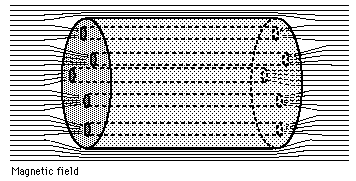Interactive 3D Astronomical Equivalent CT or CAT Scan Map of Cassiopeia A (click here)
CT Scan of a human brain has a somewhat similar frothy bubbly swiss cheese like appearance of Cas A supernova.
The "Missing" interior iron core mystery is an awfully wrong theory that is refuted by direct observations of supernovas having empty centers. All searches to find supernova interior core remnants have failed.
The "rings of debris" are produced by magnetic fields that connect to the interior cavities. The scientists say they are like bomb squad detectives, instead of plasma and superfluid physicists who should be doing the scientific interpretations.Superconducting supernova cores involves iron. Iron and lead used for superconductors at Princeton produces majorana particles with stable electon pair aligned spins, so that each electron is its very own antimatter particle or magnetic monopole. Many physicists believe that solar neutrinos don't exist, and are instead majorana particles, that explains the "missing" antimatter mystery of the big-bang theory. majorana particles discovered by princeton
Majorana particles refutes gravity sun supernova models
The famous cotton candy supernova has an empty center without a core remnant.


































































.jpg.png)









